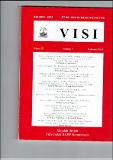Peranan Subtipe miRNA pada Keadaan Post Infark Miokardium
Abstract
microRNAs (miRNA) are single strands of non-coding RNA molecules consisting of 20-24 nucleotides, and a post-transcriptional regulator of gene expression by inhibiting translation of mRNA in protein synthesis or causing mRNA degradation. Many studies have found the function of miRNAs in regulating various growth and phsyological functions and pathological conditions, even when miRNAs increasingly involved in the regulation of physiological and pathological conditions of the heart. In the pathophysiology of myocardial infarction, many subtypes miRNA have important role, as well as on the state of post-myocardial infarction. Some cardiacspecific miRNAs, including mir-1, mir-133a, and mir-208., plays important role in maintaining growth and cardiac function, and many previous studies mir-1, mir-133a, mir-499, and mir-208 high in the blood of patiet with myocardial infarction compared with those from patient without myocardial infarction. In addition, mir-21 has a protective effect against ischemia-cell apoptosis. To test miRs role in human pathology, most studies using high through put method to analyze the expression of mir in clinical samples. Right now, antimiRNA oligonuclotides have become the tools necessary to research miRNA and also been suggested to be a potential therapeutic agent.

